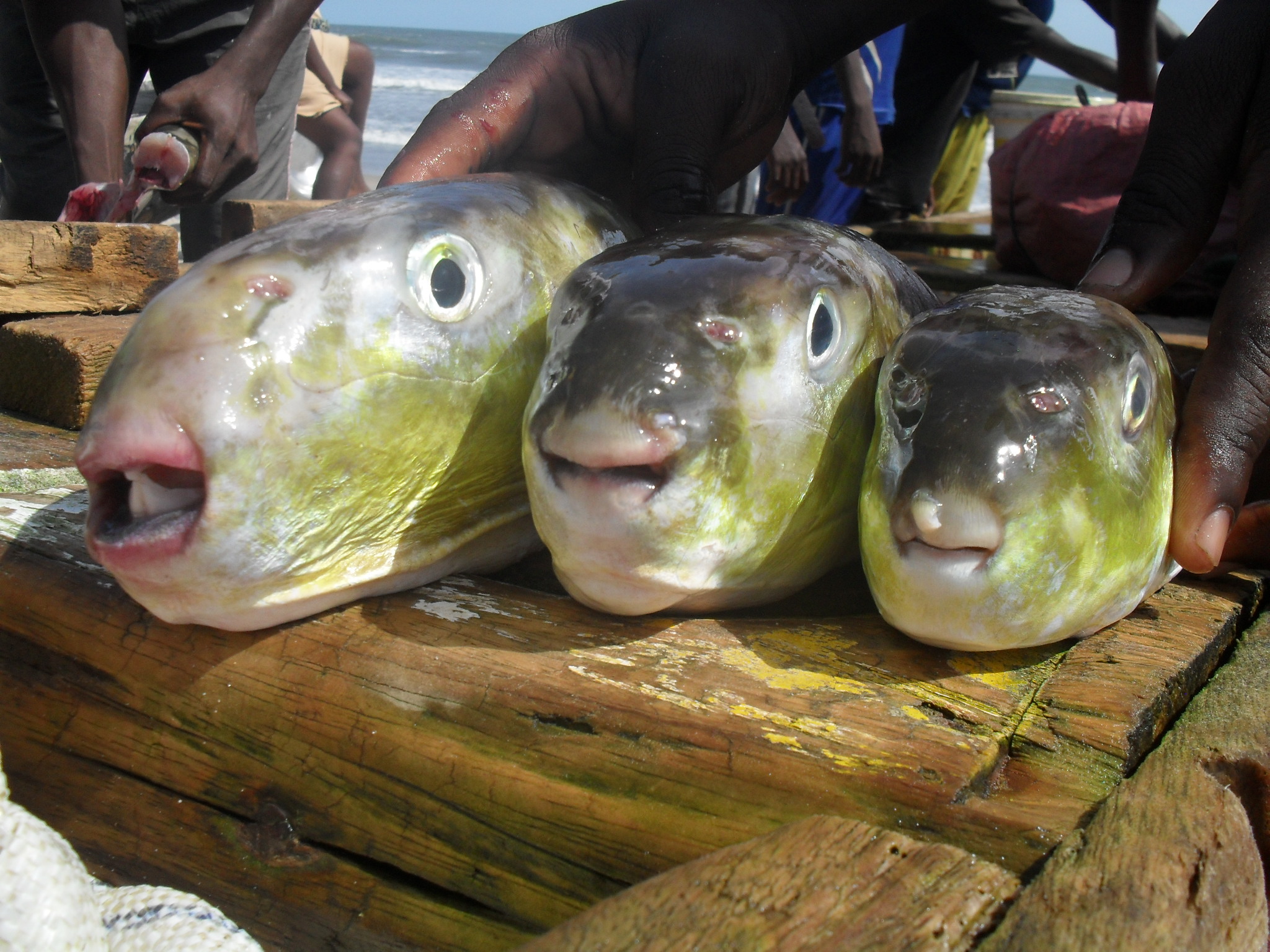Lagocephalus Laevigatus on:
[Wikipedia]
[Google]
[Amazon]
 ''Lagocephalus laevigatus'', known as the smooth puffer, is a
''Lagocephalus laevigatus'', known as the smooth puffer, is a
 ''Lagocephalus laevigatus'', known as the smooth puffer, is a
''Lagocephalus laevigatus'', known as the smooth puffer, is a species
In biology, a species is the basic unit of classification and a taxonomic rank of an organism, as well as a unit of biodiversity. A species is often defined as the largest group of organisms in which any two individuals of the appropriate s ...
of pufferfish in the family Tetraodontidae
Tetraodontidae is a family of primarily marine and estuarine fish of the order Tetraodontiformes. The family includes many familiar species variously called pufferfish, puffers, balloonfish, blowfish, blowies, bubblefish, globefish, swellfis ...
. It is native to the Western Atlantic, where it ranges from New England
New England is a region comprising six states in the Northeastern United States: Connecticut, Maine, Massachusetts, New Hampshire, Rhode Island, and Vermont. It is bordered by the state of New York (state), New York to the west and by the Can ...
to Argentina
Argentina (), officially the Argentine Republic ( es, link=no, República Argentina), is a country in the southern half of South America. Argentina covers an area of , making it the second-largest country in South America after Brazil, th ...
, as well as the Eastern Atlantic, where it ranges from Mauritania to Namibia
Namibia (, ), officially the Republic of Namibia, is a country in Southern Africa. Its western border is the Atlantic Ocean. It shares land borders with Zambia and Angola to the north, Botswana to the east and South Africa to the south and ea ...
. Adults of the species are pelagic
The pelagic zone consists of the water column of the open ocean, and can be further divided into regions by depth (as illustrated on the right). The word ''pelagic'' is derived . The pelagic zone can be thought of as an imaginary cylinder or w ...
and found near continental margins, whereas juveniles are usually found closer to shore or offshore banks, with both occurring either alone or in small, loose groups. It occurs at a depth range of 10 to 180 m (33 to 591 ft) over sandy or muddy bottoms and is a very large pufferfish, reaching 100 cm (39.4 inches) in total length. The species feeds on fish and shrimp and can be dangerously toxic if ingested. It is known to be oviparous. It is sometimes confused with the related species '' Lagocephalus inermis'' which is native to the Indo-Pacific.
References
Tetraodontidae Lagocephalus Fish described in 1766 {{Tetraodontiformes-stub